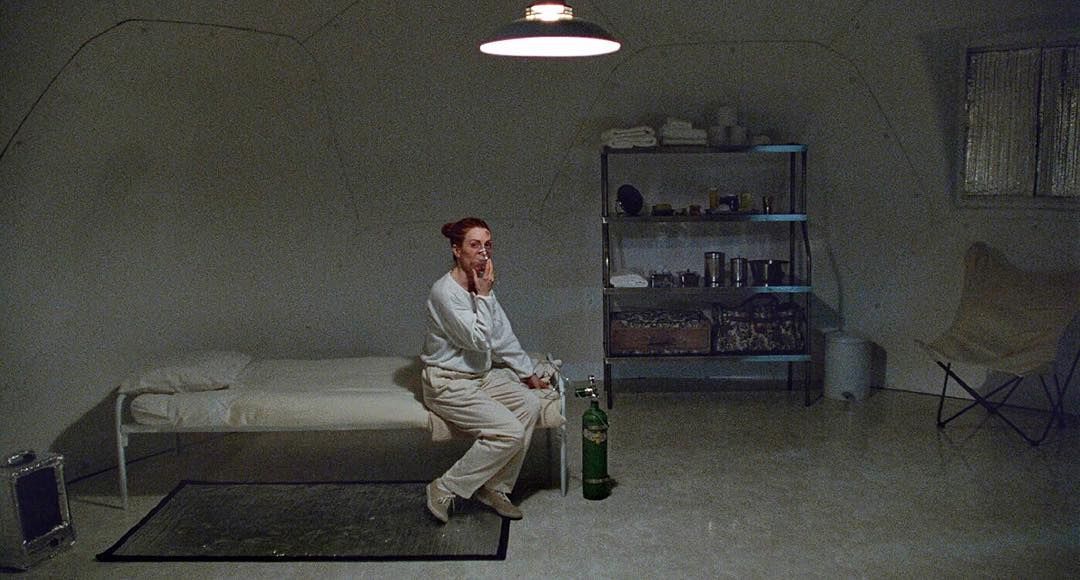Gore, jump-scares and ghosts have gotten old. 2020 needs a film like 1995’s ‘Safe’, where poor health is truly frightening.

There are moments now when, maybe in the supermarket as an automated voice reminds us to keep our distance from each other, or on public transport when you can’t see the smile behind the drivers mask, our world seems truly surreal. The fear of getting sick or of making others sick follows us wherever we go and even in our leisure time through the constant live news updates we come across. Fear has taken on a new definition this year. Realistic concerns such as being followed home from the pub, getting mugged in the street; these have been secondary thoughts for many of us. This is the future of fear.
There have been many worldwide health concerns in the past, pandemics and epidemics that have plagued society and disrupted what we like to call ‘normal life’. These moments of actual terror, of paranoia and widespread fear, have been seized on by creatives. Sometimes we see our world distorted into a dystopia, as in Stanley Kubrick’s A Clockwork Orange where a rise in youth violence is presented in a stylised yet terrifying fashion. At other times we see a very realistic portrayal of our world, such as with Bong Joon-Ho’s vision of an apocalyptic world rife with class divide in Snowpiercer. When our world, or an environment where we feel comfortable, is transformed into a place of horror and anxiety, fear hits us hardest. Thus, in 2020, films that focus on disease or plague-based horror are bound to hit closest to home.
Todd Hayne’s 1995 psychological horror film Safe plays on the horror of an undiagnosable disease. Carol White, played by renowned actress Julianne Moore, is a well-off homemaker in Los Angeles. Throughout the first half of the film, she becomes plagued by nose bleeds, coughing fits and lethargy, but is found to be perfectly healthy when examined. A flyer at her health centre and a television advertisement viewed while she convalesces in hospital draw her to Wrenwood, a facility for the rehabilitation of those who suffer from ‘environmental sickness’. This apparent ailment is allegedly caused by the chemicals in the atmosphere we are exposed to during everyday life. Carol is convinced she has reached her maximum tolerance to these chemicals and begins carrying around an oxygen tank before finally moving in to Wrenwood.
The film is a slow burn, with no real conclusion and no obvious or overarching message. The film has been described as an analogy for the AIDS crisis during the 1980’s, a feminist statement on female oppression and an inditement on the self-help movement. Director Todd Haynes has neither denied nor confirmed these theories, but has states that Carol’s isolation is both her problem and her cure.
Wrenwood, an isolated community reminiscent of a low-quality school camp, offers frightening scenes of a world worried by health. The residents stay in their own cabins and are subject to long, rambling self-help lectures from their leader. Elderly people wear masks and avoid human contact, while others focus on meditation and positive thought as a cure to their invisible illness. The film is plagued by images of a resident named Lester, who is seen wandering through the barren landscape in a strange full-body morph suit, mask and vest.

Despite the relative lack of action in Safe, Carol’s coughing fits and nosebleeds become truly horrific cinematic scenes as as she struggles through the rising tensions of social situations. Lester, referred to as ‘poor Lester’, is unexplained, making his scenes a frightening display of environmental fear. It is a strangely relevant film to watch 15 years after its creation, with themes that seem to suit our current situation perfectly.
The world is in a state of anxiety. We are waiting for a vaccine that may not arrive. We are scared of our workplaces, our friends, even our families. Safe offers us a world where doctors and authorities are afraid of what they don’t understand. We are lucky in that we have very highly-skilled professionals working for the safety of the human race, yet the fear reflected in the film is still prevalent in our modern life. All we can do now is hope we don’t end up like poor Lester.
Subscribe to FIB’s Weekly Alchemy Report for your weekly dose of music, fashion and pop culture news!







